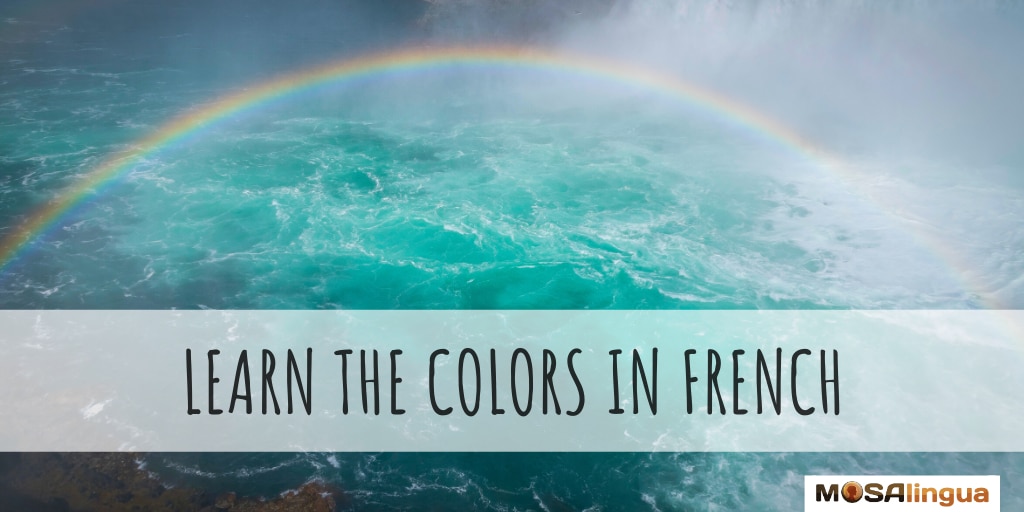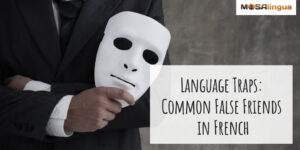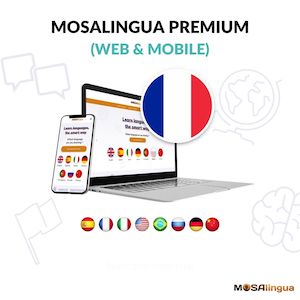Just like numbers, body parts and other groups of vocabulary, it can be hard to remember all the different words for colors — especially because there are literally hundreds of them! Fortunately, knowing just 10 or 15 colors in French is enough to get you by in most situations. Plus, today we’ll teach you some hacks you can use for describing colors when you’re not sure of the exact word.

Bleu, Blanc, Rouge: Learn the Most Important Colors in French
Colors also help us to express emotions through language. Every language uses colorful expressions, and different cultures use different colors for different situations. For example, in English we say that somebody is green with envy if they’re really jealous. But in French, we say être vert de rage, or green with anger.
In this post, we’ll look at some of the most important colors used in everyday life, different words you can use to add precision, and a few common French expressions with colors.
Colors as adjectives in French
Like most adjectives in French, colors usually have to match the noun they describe, both in gender (masculine or feminine) and number (singular or plural). Don’t worry, it’s not too complicated. For colors that don’t end in e, add one to make it feminine. Add an s to any color to make it plural.
So for example, a fish (un poisson) is masculine, but a whale (une baleine) is feminine:
Bleu(e)(s)
Un poisson bleu — a blue fish
Une baleine bleue — a blue whale
Des poissons bleus — some blue fishes
Des baleines bleues — some blue whales
Colors that are named for objects (like coral or salmon), as well as colors with more than one word (light blue, blue-green, rust red, salmon pink), are “invariable.” That means they don’t change based on gender or number. In the list of colors below, you’ll see an (e) and (s) if these letters need to be added for feminine and plural forms.
Primary Colors
Rouge(s) — Red
Jaune(s) — Yellow
Bleu(e)(s) — Blue
Être rouge de confusion — to be super embarrassed.
Être la lanterne rouge — to be in last place.
Un rire jaune — a forced laugh.
Franchir la ligne jaune — to cross the line; overstep a boundary.
Avoir une peur bleue — to be really scared.
Être fleur bleue — to be the romantic sort.
Secondary Colors
Secondary colors are made from different combinations of primary colors.
Vert(e)(s) — Green
Orange(s) — Orange
Violet(te)(s) — Purple
Avoir le pouce vert — have a green thumb; be good at gardening.
Être vert de rage — to be extremely angry.
Apporter des oranges à quelqu’un – to visit someone in the hospital or in prison. You might be familiar with the British tradition of bringing grapes to someone in the hospital. Same idea, different fruit!
Voir des anges violets — to be a dreamer; to have big dreams that one fails to realize.
Faire (du) feu violet — to live beyond one’s means; to have a passing fancy for something. (This one is somewhat outdated, though, and a more common expression today would be “feu de paille,” which translates roughly to “a flash in the pan.”)
Tertiary Colors
Mixes of one primary and one secondary color.
Sarcelle(s) — Teal
Vert(e)(s) citron or chartreuse(s) — Lime green
Brun(e)(s) or Marron(s) — Brown
Aller de la brune à la blonde — to go for all different kinds of men or women, romantically.
À la brune — at dusk; just before sunset.
Other common colors
Rose(s) — Pink
Magenta — Magenta
Corail — Coral
Cramoisi(e)(s) — Crimson
Bleu marine — Navy blue
Turquoise(s) — Turquoise
Cyan — Cyan
Kaki — Khaki
Vert olive — Olive green
Ivoire — Ivory
Beige(s) — Beige
Gris(e)(s) — Gray
Gris charbon — Charcoal gray
Noir(e)(s) — Black
Blanc(he)(s) — White
Argenté(e)(s) — Silver
Doré(e)(s) — Gold
Multicoloré(e)(s) — Multicolored
Voir la vie en rose — To wear rose-colored glasses; see the world optimistically.
Broyer du noir — To see the world pessimistically.
De but en blanc — All of a sudden; unexpectedly.
Describing shades
You can use adverbs to describe colors in French the same way you can in English. Because they’re made up of more than one word, they don’t change based on number or gender.
Bleu foncé — Dark blue
Vert clair — Light green
Jaune vif — Bright yellow
When you’re not sure exactly how to describe a color, you can use the suffix -âtre, which is like the suffix –ish in English:
Rougeâtre — Reddish
Jaunâtre — Yellowish
Blanchâtre — Whitish
Verdâtre — Greenish
Notice that for some colors, like blanc (white) and vert (green), the root changes. These kinds of exceptions just need to be memorized, but there aren’t many of them.
Learn to Say Colors in French
We made this YouTube video to help you learn how to pronounce all the colors discussed above. The video is in French, with subtitles in English, German, Spanish, Italian, and Portuguese. You can slow down the playback speed by clicking on the settings icon at the bottom right.
Don’t forget to subscribe to our YouTube channel for more fun French lessons.
How to Memorize the Colors in French
The best way to remember colors (any vocab, really) in the long run is with a spaced repetition system, like the one used in MosaLingua Premium (Web & Mobile). Basically, this method relies on studying colors in French right before you’re about to forget them. Bit by bit, you’ll end up committing all of them to your long-term memory! You can find out more about the spaced repetition system here. A lot of these colors are already included in your MosaLingua French app, but you can always add custom flashcards for other colors you want to learn.
Great job making it to the end of this article. We hope you liked it and found it useful! Please let us know in the comments down below!
Related posts:
Want to start improving your language skills today?
Start improving your French today
Good news: we can help!
More good news: you can get started for free! With your free trial, you can test drive the most effective method for learning French for the next 15 days!
Vocabulary flashcards, videos with subtitles, audiobooks, articles adapted to your level – with MosaLingua Premium (Web & Mobile), you’ll have access to all this and more. Get started right now. It’s free—and risk-free—to try!





Comments